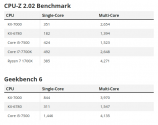Is anyone familiar with ABF, please? Care to explain a little more...
Chip Monopoly Under Threat: US, China Counterpunch Against Ajinomoto
Ikeh James April 17, 2024
SHARE
Why is it difficult for China's chip industry to become self-sufficient?
Why is it difficult for China’s chip industry to become self-sufficient?
For years, the semiconductor industry bowed to Ajinomoto’s near-absolute control over a crucial material – ABF (Anisotropic Conductive Film). This dominance sparked concerns about supply chain vulnerability, particularly for the US and China locked in a tech war. But the tide is turning.
Ajinomoto’s Grip Challenged: A Shift in Policy
Both the US and China have undergone a policy shift, prioritizing domestic chip manufacturing and reducing reliance on foreign suppliers like Ajinomoto.
US Rebuilds Domestic Muscle: The US CHIPS Act directly injects investment into chip companies building factories within the US. Even smaller players like Syntronics will benefit from this act, gaining access to funding and a US-based supply chain. This strengthens domestic production and lessens dependence on overseas suppliers.
China Seeks Self-Sufficiency: The US-led restrictions on access to cutting-edge chip technology have cornered China. While ABF isn’t currently restricted, China recognizes the risk of relying on a single foreign source for such a critical material. They are actively seeking domestic alternatives for ABF to mitigate the risk of future sanctions.
Beyond Policy: The Hurdles of Disruption
Shifting the ABF monopoly landscape requires more than just government intervention. Even with a superior alternative material, convincing the industry to adopt it widely is an uphill battle.
A History of Failed Attempts: “Many companies, including Japanese and American firms, have attempted to dethrone ABF,” says Venky Sundaram, a semiconductor expert. “These efforts achieved only limited success.”
Intricate Interdependence: Chip manufacturing is a complex ecosystem where components rely heavily on each other. Changing one material can necessitate adjustments throughout the entire process, making widespread adoption a slow and challenging feat.
Industry Buy-In: A Challenge James, another industry expert, highlights the difficulty of convincing established players to switch. “The industry might be hesitant to disrupt well-established processes,” he says.
The Road Ahead: Ajinomoto’s Reign, But Change Brewing
Ajinomoto’s market dominance is likely to persist for now, as challengers grapple with technical hurdles and industry inertia. However, the implications for the US and China differ:
US: By fostering domestic production, the US aims to reduce reliance on Ajinomoto and potentially emerge as a stronger competitor in the chip market.
China: China’s focus on domestic alternatives aims to lessen its dependence on Ajinomoto and mitigate the risk of future US sanctions hindering its technological advancements.
The future of the ABF market hinges on overcoming technical challenges and gaining industry acceptance for new materials. While Ajinomoto may retain its position for now, the combined efforts of the US, China, and potentially other players could pave the way for a more comp
etitive landscape in the long run.

